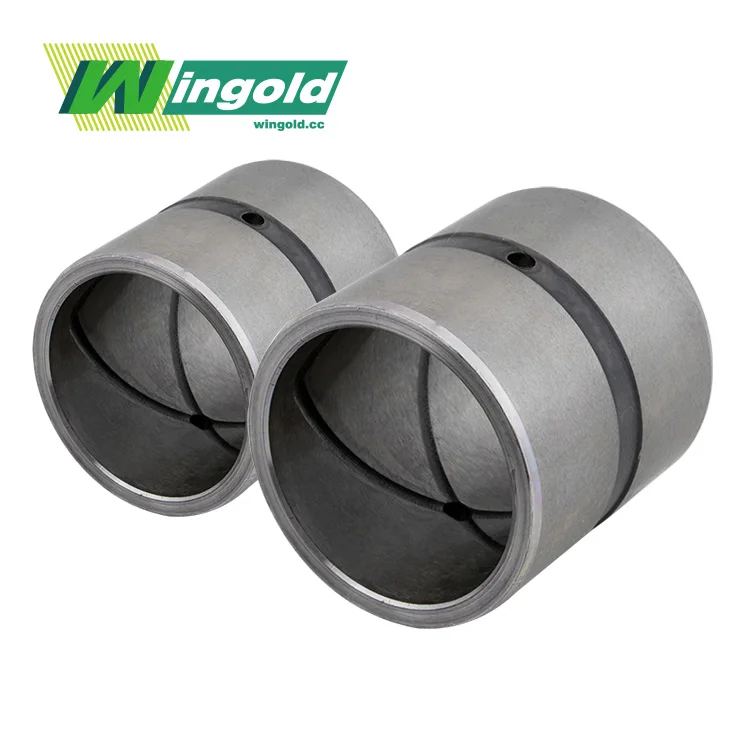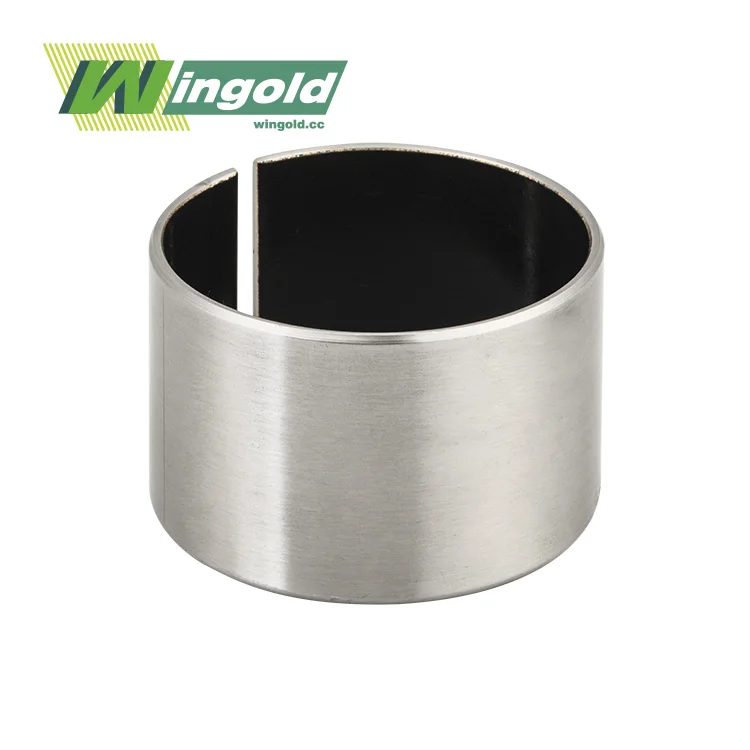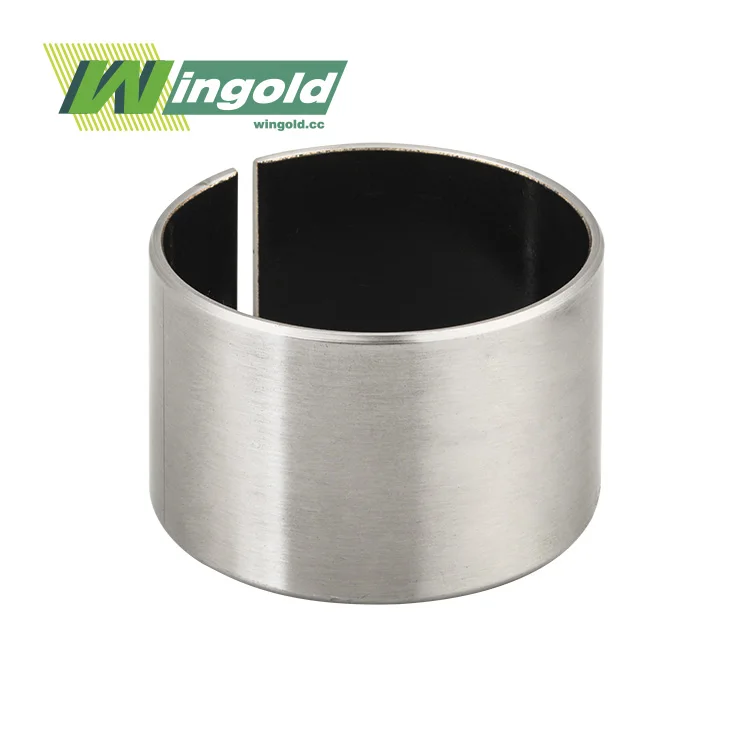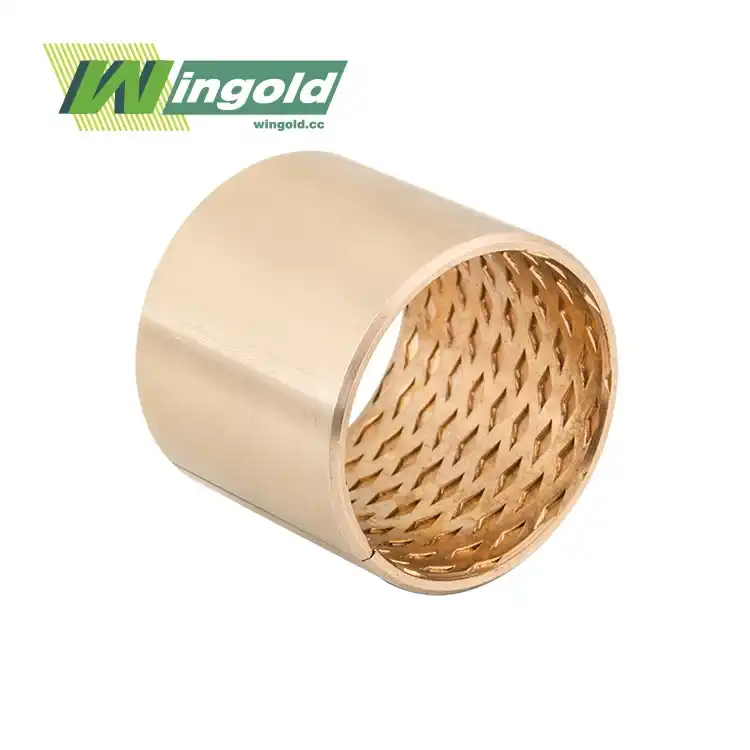
Understanding the Composition and Structure of PTFE Composite Bushings
The Unique Layered Design
PTFE composite bushings boast a sophisticated layered structure that contributes to their superior performance. At their core, these bushings feature a robust composite backing, typically made from materials like fiberglass-reinforced epoxy or steel. This backing provides the structural integrity and load-bearing capacity essential for demanding applications.
Adhered to this sturdy foundation is a thin layer of PTFE (polytetrafluoroethylene), a synthetic fluoropolymer known for its exceptional low-friction properties. This PTFE layer serves as the sliding surface, offering minimal resistance and wear during operation. The combination of these layers results in a bushing that marries strength with minimal friction, a crucial factor in their ability to excel in harsh conditions.
Material Properties and Their Contributions
The materials used in PTFE composite bushings contribute significantly to their performance in challenging environments. The PTFE layer, with its inherently low coefficient of friction (typically between 0.02 and 0.08), ensures smooth operation even under high loads. This low friction not only reduces wear but also minimizes energy consumption in the systems where these bushings are employed.
The composite backing material, whether it's fiberglass-reinforced epoxy or steel, provides excellent load-bearing capacity. These bushings can handle loads up to 140 N/mm², making them suitable for heavy-duty applications. The backing also contributes to the bushing's dimensional stability, maintaining tight tolerances even under load and temperature variations.
Moreover, the chemical inertness of PTFE grants these bushings exceptional resistance to a wide range of chemicals and corrosive substances. This property is particularly valuable in industrial settings where exposure to aggressive fluids is common.
Performance Characteristics in Extreme Conditions
Temperature Resilience
One of the standout features of PTFE composite bushings is their remarkable temperature resilience. These bushings can operate effectively across an expansive temperature range, typically from -200°C to +280°C. This wide operational range makes them indispensable in applications that experience extreme temperature fluctuations or consistently high or low temperatures.
At low temperatures, where many materials become brittle and lose their effectiveness, PTFE composite bushings maintain their flexibility and low-friction properties. This characteristic is particularly valuable in cryogenic applications or cold climate operations. Conversely, at high temperatures where conventional lubricants might break down or evaporate, these bushings continue to provide reliable, low-friction performance without the need for external lubrication.
Chemical Resistance and Corrosion Protection
The chemical inertness of PTFE is a key factor in the exceptional performance of these composite bushings in corrosive environments. PTFE is resistant to almost all chemicals, including strong acids, bases, and solvents. This resistance extends to the entire pH range, making these bushings suitable for use in highly acidic or alkaline conditions where other materials would quickly degrade.
In industries such as chemical processing, petrochemicals, or pharmaceuticals, where exposure to aggressive chemicals is common, PTFE composite bushings provide a reliable solution. They maintain their structural integrity and low-friction properties even when in constant contact with corrosive substances, ensuring consistent performance and extended service life.
Load-Bearing Capacity and Dimensional Stability
Despite their low-friction surface, PTFE composite bushings demonstrate impressive load-bearing capabilities. The composite backing allows these bushings to withstand high loads while maintaining their shape and performance characteristics. With load capacities reaching up to 140 N/mm², they can handle the demanding conditions often found in heavy machinery and industrial equipment.
The dimensional stability of these bushings under load is another crucial factor in their success in harsh conditions. Even when subjected to high loads or temperature variations, PTFE composite bushings maintain their shape and tolerances. This stability is vital in applications where precision is paramount, such as in automated manufacturing equipment or aerospace components.
Applications and Industries Benefiting from PTFE Composite Bushings
Automotive and Transportation
In the automotive industry, PTFE composite bushings find extensive use in various components. They are commonly employed in steering systems, suspension assemblies, and brake mechanisms. The bushings' ability to operate without external lubrication is particularly advantageous in these applications, as it eliminates the need for regular maintenance and reduces the risk of contamination.
The transportation sector, including aerospace and railway industries, also benefits from the unique properties of PTFE composite bushings. In aircraft, these bushings are used in control surfaces, landing gear assemblies, and cargo loading systems. Their ability to perform reliably in extreme temperature conditions—from the cold of high altitudes to the heat generated during landing—makes them invaluable in aerospace applications.
Industrial Machinery and Equipment
The industrial sector is perhaps where PTFE composite bushings showcase their versatility most prominently. In heavy machinery, such as construction equipment, mining apparatus, and agricultural implements, these bushings provide long-lasting, maintenance-free operation under high loads and in dirty environments.
In manufacturing facilities, PTFE composite bushings are utilized in conveyor systems, robotic arms, and packaging machinery. Their self-lubricating nature is particularly beneficial in food processing and pharmaceutical manufacturing, where contamination from external lubricants must be avoided at all costs.
Marine and Offshore Applications
The marine environment presents unique challenges, combining high loads, corrosive saltwater, and often extreme temperatures. PTFE composite bushings excel in this harsh setting, finding applications in ship rudder bearings, propeller shaft bearings, and various deck equipment.
In offshore oil and gas platforms, these bushings are used in crane pedestals, winch systems, and other critical equipment. Their ability to resist corrosion and perform reliably without external lubrication makes them ideal for use in remote, hard-to-maintain locations where reliability is paramount.
Conclusion
PTFE composite bushings have proven their worth in a wide array of harsh conditions across numerous industries. Their unique combination of low friction, high load capacity, chemical resistance, and temperature stability makes them an invaluable component in many challenging applications. As industries continue to push the boundaries of what's possible, these versatile bushings will undoubtedly play a crucial role in enabling new innovations and improving the performance and reliability of existing systems.
For more information about our PTFE composite bushings and how they can benefit your specific application, please don't hesitate to contact us at info@wingold.cc. Our team of experts is ready to help you find the perfect bushing solution for your needs, no matter how challenging the conditions may be.
FAQ
What makes PTFE composite bushings different from traditional bearings?
PTFE composite bushings combine a low-friction PTFE layer with a strong composite backing, offering self-lubrication, high load capacity, and chemical resistance.
Can PTFE composite bushings operate in extreme temperatures?
Yes, these bushings typically function effectively from -200°C to +280°C, making them suitable for a wide range of temperature conditions.
Are PTFE composite bushings suitable for use in corrosive environments?
Absolutely. The chemical inertness of PTFE makes these bushings highly resistant to most chemicals and corrosive substances.
Do PTFE composite bushings require regular maintenance?
No, these bushings are self-lubricating and generally maintenance-free, reducing downtime and operational costs.



